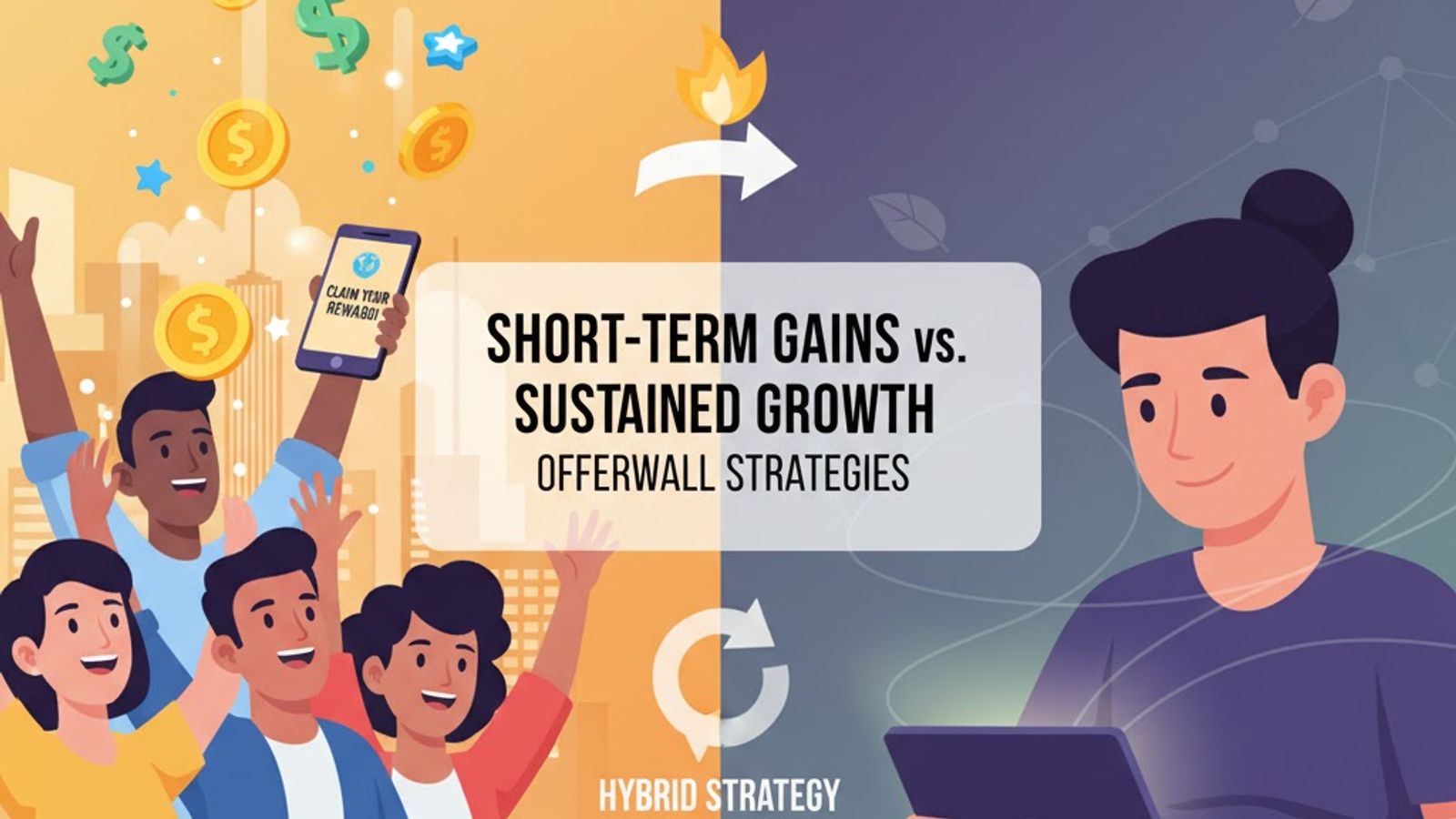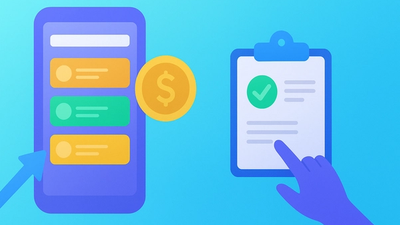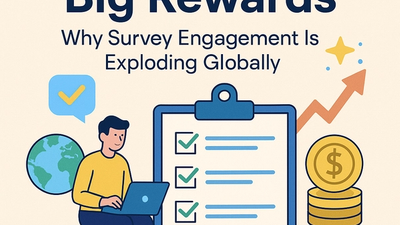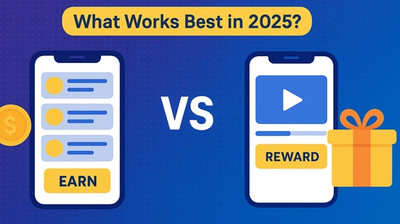Incentivised vs Non-Incentivised Offers: Finding the Right Balance

Ajeet Thapa

Introduction
In the fast-moving world of offerwalls and performance marketing, advertisers constantly look for the most effective way to convert users into loyal customers. One major decision in this process is how to motivate user actions — through incentivised or non-incentivised offers.
Incentivised offers attract attention quickly with rewards, driving massive engagement in a short period. Meanwhile, non-incentivised offers appeal to genuine user interest, often producing higher-value, long-term customers. Both approaches have their place — but choosing the right one (or balancing both) can be the difference between short-term gains and sustained growth.
Let’s explore how each model works, their advantages, limitations, and where they best fit into your campaign strategy.
What Are Incentivised Offers?
Incentivised offers reward users for completing specific actions — such as downloading an app, completing a survey, or watching an ad. In return, users receive in-app currency, cashback, or digital points.
According to Affroom’s Performance Marketing Glossary, incentivised traffic involves “rewarding users for performing a desired action,” making it one of the fastest and most reliable ways to generate conversions.
Why advertisers love it:
- Quick user acquisition: It can generate large volumes of installs or signups in a short time.
- Lower upfront costs: Since users are motivated by rewards, the cost per action (CPA) is typically lower.
- Instant visibility: Ideal for app launches or awareness campaigns where exposure is key.
However, incentivised campaigns are not without downsides. Research from PanelPlace highlights that while traffic volumes are high, user intent can be weak — meaning many users complete the offer just for the reward, not genuine interest.
In some cases, this can even distort metrics. For instance, a 2020 arXiv research paper found that incentivised installs can affect app store algorithms by inflating numbers without genuine engagement. That’s why platforms like Google Play and Apple have tightened their guidelines to detect artificial growth.
Incentivised offers work best when your goal is scale, exposure, or data collection — but should be managed carefully to avoid quality loss.
What Are Non-Incentivised Offers?
Non-incentivised offers, on the other hand, depend solely on the user’s interest and intent. These users take action — install an app, subscribe to a service, or make a purchase — without expecting a reward.
According to PanelPlace’s performance comparison, non-incentivised users tend to stay longer, engage more frequently, and deliver stronger lifetime value.
Why marketers prefer it for quality:
- Authentic engagement: Users who act without incentives are genuinely interested in your product.
- Higher retention rates: Non-incentivised users are more likely to use your app or service over time.
- Better ROI over the long run: Though initial acquisition costs may be higher, the users you gain often convert into repeat customers.
However, scaling non-incentivised campaigns can be challenging. You’ll need strong creatives, compelling copy, and precise targeting to capture user attention. And because it’s purely organic, results may take longer to build — but once established, the audience base is much more loyal.
Comparing Both Models
| Metric | Incentivised Offers | Non-Incentivised Offers |
|---|---|---|
| User Motivation | Reward-driven | Interest-driven |
| Volume Potential | Very High | Moderate |
| Cost per Action (CPA) | Lower | Higher |
| Engagement Quality | Variable | Strong |
| Ideal For | Awareness, app installs, new launches | Retention, premium products, brand trust |
A 2023 study by Cambridge University Press found that non-incentivised users often make more consistent and reliable decisions than incentivised ones — suggesting that authentic engagement is a stronger predictor of long-term user satisfaction.
When to Use Each Model?
CPA or CPI Campaigns — Go Incentivised
Use incentivised offers when your campaign is focused on rapid acquisition. For example, launching a new fintech app or a mobile game where visibility and installs matter most. Incentives help you generate buzz and improve early metrics that attract more organic downloads later.
This model also works great for testing new creatives, A/B experiments, or collecting engagement data. Just ensure that rewards don’t become the only reason users participate — or you may face retention issues later.
Brand Growth or Subscription Goals — Go Non-Incentivised
When quality matters more than numbers, non-incentivised offers are your best bet. These campaigns bring users who are genuinely interested in what you offer — especially for subscription services, SaaS products, or high-value digital platforms.
They may cost more upfront, but each user adds long-term value. This approach strengthens brand trust, increases user lifetime value (LTV), and supports sustainable growth.
The Smart Middle Ground — Hybrid Strategy
The future lies in balancing both. As INCRMNTAL’s “Loyal Incentivized Traffic” study explains, advertisers can combine reward-based engagement with loyalty-focused retention tactics — gaining scale without sacrificing quality.
A hybrid strategy might start with incentivised offers to attract users quickly, then gradually shift to non-incentivised campaigns that deepen engagement and loyalty.
Conclusion
The debate between incentivised and non-incentivised offers isn’t about which one is “better.” It’s about understanding when and how to use each model strategically.
Incentivised offers are the perfect spark — fast, scalable, and efficient for growth bursts. Non-incentivised offers are the fuel that keeps the engine running — sustainable, authentic, and rooted in real user interest.
Marketers who learn to blend both models effectively can create campaigns that balance reach, quality, and longevity — the true formula for success in modern offerwall advertising.
Related Articles

Beyond Installs: How Advertisers Can Use Offerwalls for Lead Generation, Subscriptions & Retention
Offerwalls are evolving — learn how they’re driving leads, paid subscriptions, and loyal users far beyond the install.

Microtasks, Big Rewards: Why Survey Engagement Is Exploding Globally
Small clicks, big payoffs! Discover how microtasks and paid surveys are helping millions earn online while reshaping the future of digital engagement and global rewards.

Offerwall Advertising vs Rewarded Video Ads: What Works Best in 2025?
Explore how offerwall advertising and rewarded video ads shape user engagement and revenue in 2025. Find out which format suits your app best — and why combining both can unlock your monetization.